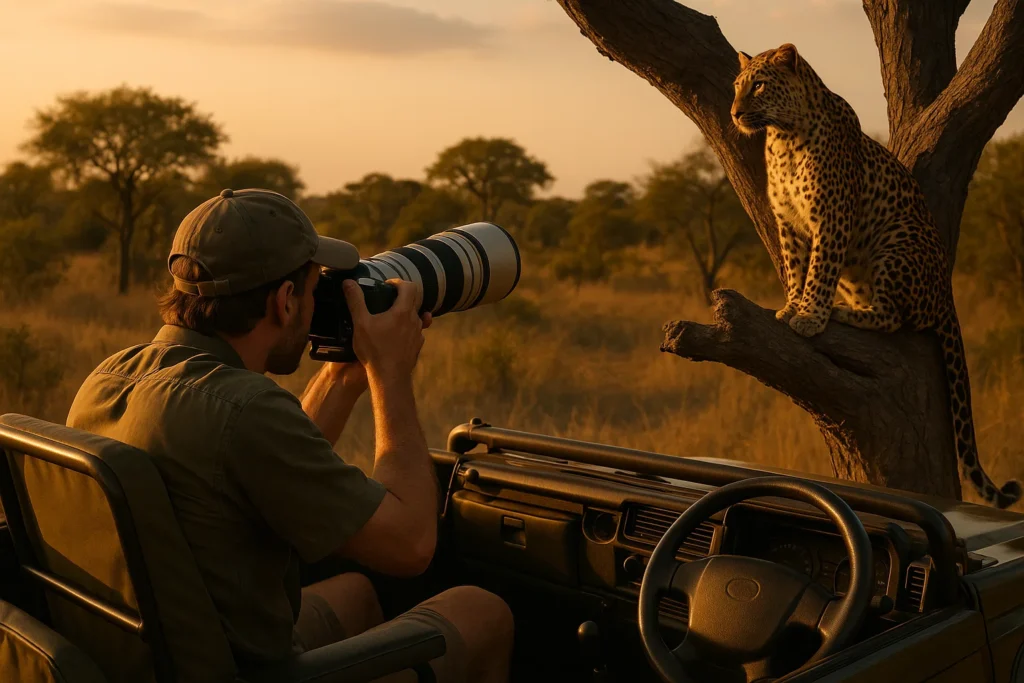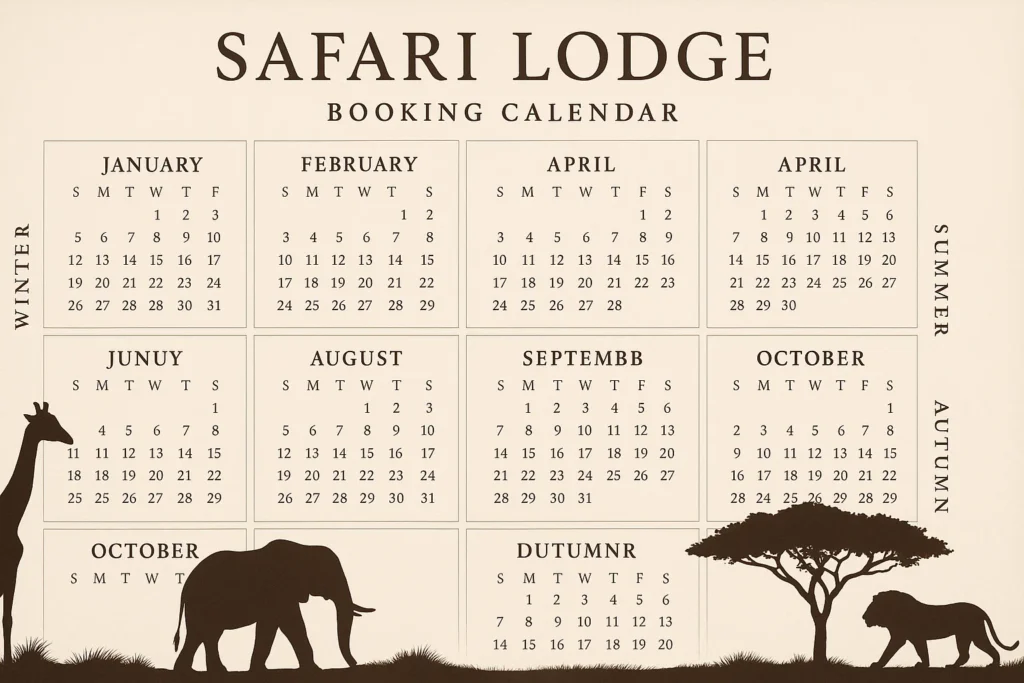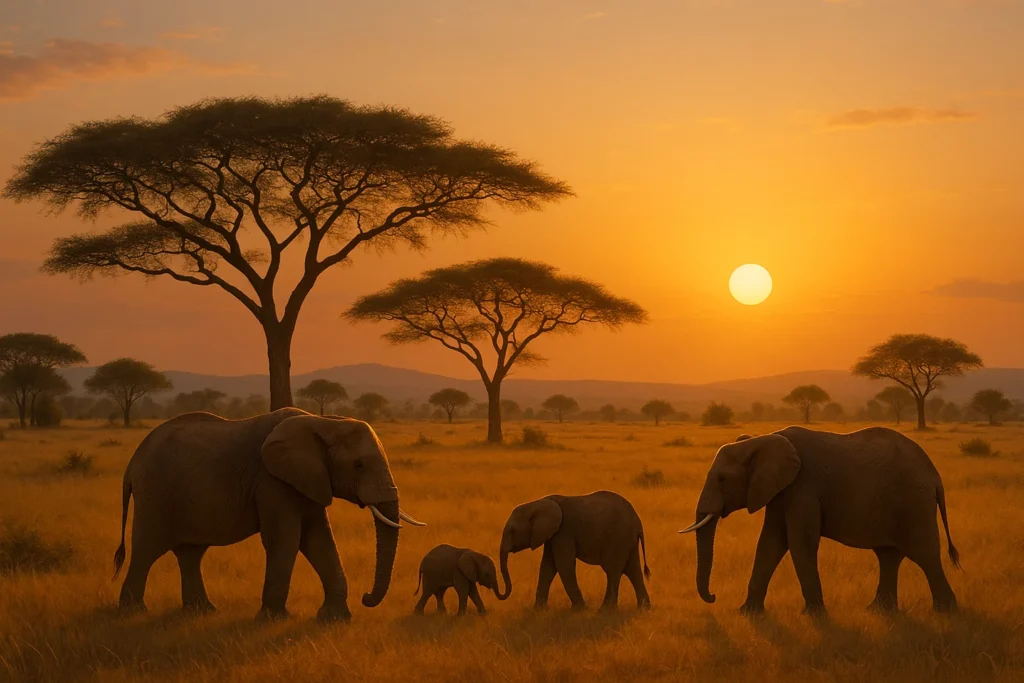For wildlife photographers seeking the ultimate safari canvas, few places rival the Sabi Sand Game Reserve. Nestled along the western border of Kruger National Park, this private reserve offers not just proximity to wildlife but an experience meticulously crafted for capturing nature’s most breathtaking moments. Here’s why Sabi Sand stands as a premier destination for serious photographers.
Leopard central: density and proximity
Sabi Sand is world-renowned for its unusually high density of leopards. Unlike in other reserves where sightings are rare or fleeting, here it’s common to spend an entire game drive following the same leopard, capturing a full range of behaviors—from stalking and climbing to grooming and yawning in golden light.
Guides and trackers in Sabi Sand are deeply familiar with resident leopard families, often knowing individual animals by name. This allows for deeper storytelling through photography, as you follow the lives of these cats over several game drives.
Expert-led photographic safaris
Photographers visiting Sabi Sand can join specialized photographic safaris hosted by expert guides or even professional wildlife photographers. These trips focus on:
- Light optimization (positioning vehicles for sunrise/sunset shots)
- Understanding animal behavior for predictive framing
- Editing and feedback sessions between drives
Many lodges now include onboard camera mounts, beanbags, and charging stations. Some even offer camera rentals and lenses ideal for safari use, reducing the need to travel with heavy gear.
Off-road access and limited vehicle presence
Unlike public parks where off-road driving is prohibited and sightings can become crowded, Sabi Sand operates on a private model. Rangers can go off-road when necessary to ensure the best angles, especially useful when photographing predators or rare interactions.
Moreover, sightings are restricted to 2–3 vehicles at a time, ensuring your shot isn’t blocked by a car—or rushed due to pressure from other visitors.
Dream lighting and varied terrain
Sabi Sand’s landscape offers a rich palette: open savannahs, dry riverbeds, dense bush, and watering holes. Combined with the golden tones of early morning and late afternoon light, photographers enjoy an ideal environment for creative framing and dramatic contrasts.
Dust clouds, animal silhouettes, and reflections at sunset—Sabi Sand delivers the kind of raw, evocative imagery that defines iconic wildlife photography.
Wildlife diversity and behavior
While the Big Five are abundant, what makes Sabi Sand special is how habituated the animals are to vehicles. Elephants walk calmly past your lens, lions yawn just meters away, and wild dogs chase impalas in clear view—all without signs of stress or retreat.
This behavioral comfort is the result of decades of non-threatening vehicle interaction, allowing photographers to capture intimate scenes that would be impossible elsewhere.
Conservation-driven storytelling
Many photographers now seek not just beauty, but impact. Sabi Sand’s strong conservation ethos provides meaningful storytelling opportunities—whether documenting rhino protection efforts, highlighting anti-poaching patrols, or capturing the relationship between wildlife and the surrounding communities.
Your images can contribute to awareness, education, and advocacy for the species and ecosystems you photograph.
Conclusion
Sabi Sand is more than a safari destination—it’s a creative stage for photographers passionate about wildlife, behavior, and conservation. With expert guides, tailored support, and an unrivaled setting, it transforms a game drive into a storytelling journey through the lens.
If you’re serious about wildlife photography, this is where your best portfolio begins.
Explore our blog for gear guides, safari photography tips, and top photographic lodges in Africa.
FAQs
Dry season (May to September) offers clearer skies, golden light, and high animal concentration.
No—while DSLRs and mirrorless setups help, even advanced point-and-shoots or phones can yield great results with proper positioning and lighting.
No. Drone use is prohibited to protect wildlife and visitor experience.
Very close—within a few meters—thanks to habituated wildlife and professional guide tracking.
They can be, especially with private guides or photographic hosts. However, many lodges include photography-friendly features at standard rates.
A range between 100–400mm is ideal for most mammals. Wide-angle lenses are great for scenic shots or close animal portraits.
Yes—many safari vehicles are now equipped with charging ports and gear mounts.






